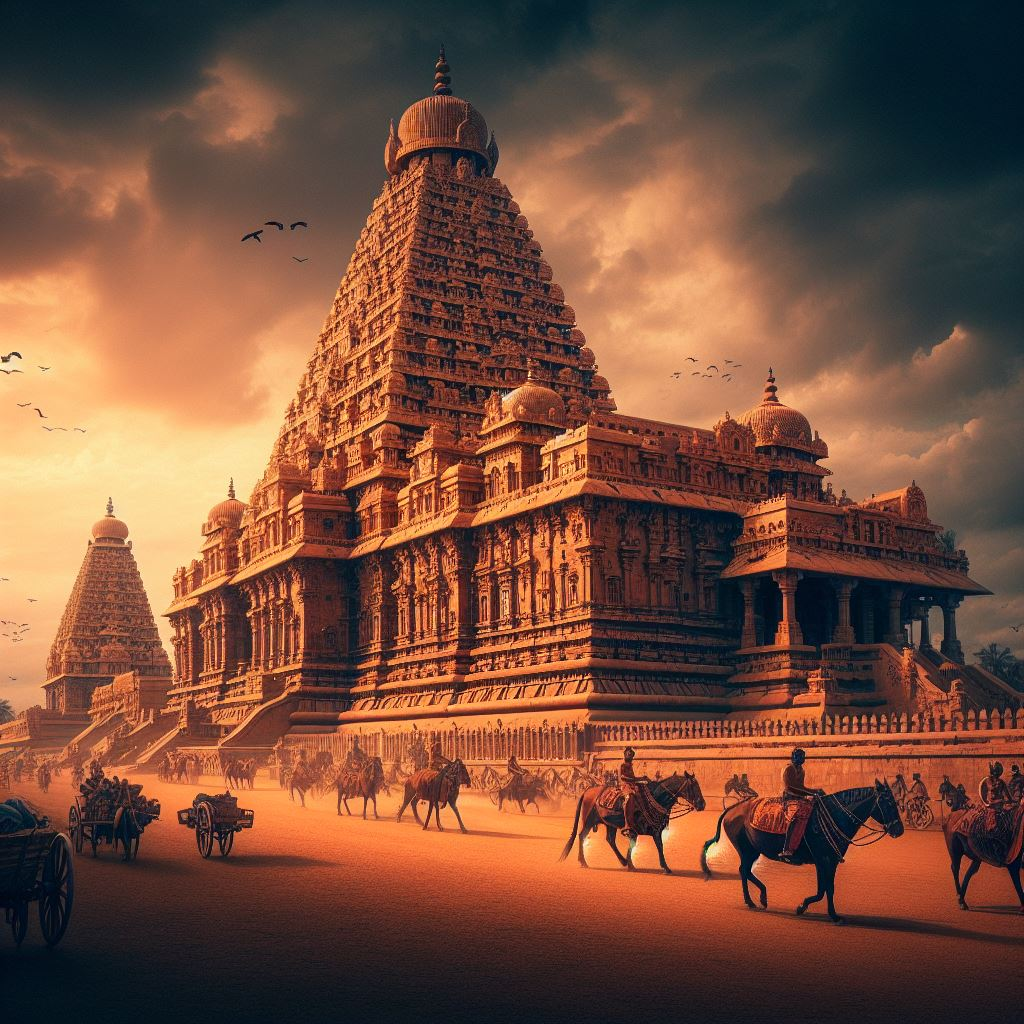
Introduction
The Tanjore Temple, also known as Brihadeeswarar Temple, is a striking example of India’s architectural grandeur and rich cultural heritage. Nestled in the historic town of Thanjavur in Tamil Nadu, this UNESCO World Heritage Site draws thousands of visitors each year, eager to marvel at its towering vimana (temple tower), intricate carvings, and vibrant history.
Historical Background
Built by the great Chola emperor Raja Raja Chola I in the 11th century, the Tanjore Temple stands as a testament to the ingenuity and vision of ancient Indian architects and artisans. Completed in 1010 AD, it celebrated its millennium in 2010, marking a thousand years of awe-inspiring presence.
Architectural Splendor
The Vimana
The most striking feature of the Tanjore Temple is its colossal vimana, which rises to a height of 66 meters. This towering structure is crowned with a massive dome, made from a single piece of granite weighing approximately 80 tons. This engineering marvel leaves historians and architects alike in awe, given the lack of modern machinery during its construction.
The Sanctum
At the heart of the temple lies the sanctum sanctorum, housing a massive Shiva lingam. The inner walls of the sanctum are adorned with exquisite frescoes and murals, depicting various mythological scenes and showcasing the artistic brilliance of the Chola period.
Intricate Carvings
Every inch of the Tanjore Temple is a canvas of intricate carvings. From the elaborate depictions of deities and mythological narratives on the walls to the ornate pillars and ceilings, the temple is a visual feast. These carvings not only serve as decorative elements but also provide a glimpse into the socio-cultural milieu of the Chola dynasty.
Cultural Significance
Religious Importance
The Tanjore Temple is dedicated to Lord Shiva and holds immense religious significance for Hindus. It is one of the largest temples in India and serves as a major pilgrimage site, especially during festivals like Maha Shivaratri. Devotees from across the country flock to the temple to seek blessings and participate in the vibrant festivities.
Artistic Heritage
The temple is a treasure trove of Chola art and architecture. The frescoes and murals, in particular, offer invaluable insights into the artistic and cultural landscape of the period. The depictions of dance forms, musical instruments, and attire provide a vivid picture of the era’s cultural richness.
Visiting Tanjore Temple
Best Time to Visit
The ideal time to visit Tanjore Temple is between October and March when the weather is pleasant. The temple complex is open from early morning till evening, allowing visitors ample time to explore and soak in its magnificence.
How to Reach
Thanjavur is well-connected by road, rail, and air. The nearest airport is Tiruchirappalli International Airport, about 60 kilometers away. Thanjavur Junction is the nearest railway station, with regular trains from major cities like Chennai, Bangalore, and Coimbatore. Buses and taxis are also readily available for local transportation.
Accommodation
Thanjavur offers a range of accommodation options, from budget hotels to luxury resorts, catering to the diverse needs of travelers. Staying in the town allows visitors to explore not just the temple, but also other nearby attractions like the Thanjavur Royal Palace and the Saraswathi Mahal Library.
Conclusion
The Tanjore Temple is more than just an architectural marvel; it is a living testament to India’s rich cultural and religious heritage. Its towering vimana, intricate carvings, and historical significance make it a must-visit destination for history enthusiasts, art lovers, and spiritual seekers alike. Plan your visit to this timeless treasure and immerse yourself in the grandeur of the Chola dynasty.



